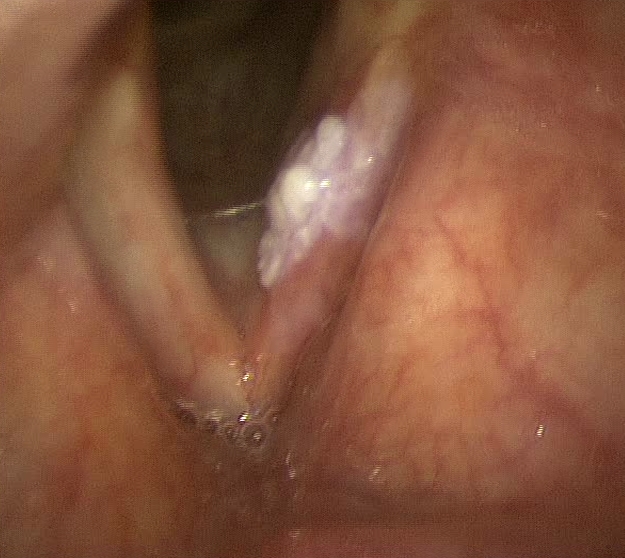Thyroidectomy is removal of the thyroid gland surgery ’.
It is necessary in the event of:
-malignant tumor suspicion or ascertained
-goiter (or struma) whose volume is important and goes to cause cosmetic problems or deviation of the trachea or dyspnoea or dysphagia
-hyperthyroidism is no longer controllable with medical therapy
-graves ' disease with ophthalmopathy Continue reading
Oncology ORL - 2. page
Speaking after total laryngectomy
LASER surgery of the larynx, the laringectomie subtotals and improved radiotherapy allow many patients to treat cancers of the larynx without excise it completely.
Unfortunately still today many cancers of the larynx and pharynx can be carried out only with the intervention of ’ total laryngectomy (eventually extended to the pharynx: faringolaringectomia)
L ’ l ’ total laryngectomy speech expected removal of the entire larynx, l ’ interview of the trachea to the skin (full permanent tracheostomy) and the rebuilding of a new food away completely independent of the airway. At discharge, patients undergoing total laryngectomy eat normally through the mouth but breathe exclusively through the Trach (no longer from the mouth and nose).
Patients often see this intervention as very mutilating but actually you can live with it almost normally: tracheotomy can be easily hidden by a scarf or clothing with the neck slightly’ tall and you can retrieve your voice! Continue reading
The precancerous and malignant tumors of the vocal cords
Even the mucous membranes of the larynx and in particular of the vocal cords can degenerate form of malignant tumors (predominantly squamous cell carcinomas).
This phenomenon occurs mostly in patients who smoke or who drink alcohol are chronically.
The degenerative process is a long process, characterized by several stages that are collected in the generic definition of Squamous intraepithelial lesions (Sils). Some types of SILs are self-limiting and reversible, Some are stable, other proceeding inexorably towards the SCC, Despite an adequate follow-up and treatment.

The most frequently used classification is the one offered by the World Health Organization (Who) in 2005, distinguishing laryngeal precancerous in:
1-Squamous cell hyperplasia: We observe an increased cell proliferation that can affect the level cell carcinoma of the skin, in this case we speak of Acanthosis, or prebasali or basal layers; the architecture is smooth and lacks atypia
2-Mild dysplasia: architectural alteration accompanied by atypia, limited to the lower third of the epithelium
3-Moderate dysplasia: interesting architectural alteration the middle third of the epithelium, with prominent nucleoli and nuclear abnormalities presenting cells, no abnormal mitosis. The lesions may be associated with Actinic
4-Severe dysplasia: interesting more than two-thirds of the epithelium, with prominent architectural anomalies, atypia, obvious nuclear abnormalities, loss of maturation, nuclear pleomorphism, bizarre nuclei. We observe an increased number of mitosis. Severe dysplasia has the same risk of developing invasive carcinoma of carcinoma in situ
5-Carcinoma in situ: that is a malignant transformation that does not invade the basement membrane
- « Previous
- 1
- 2









